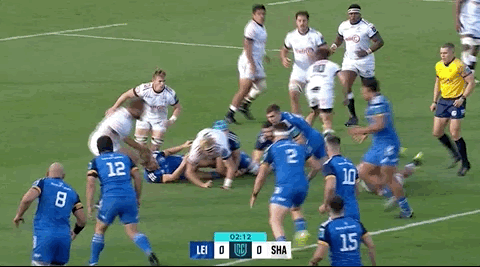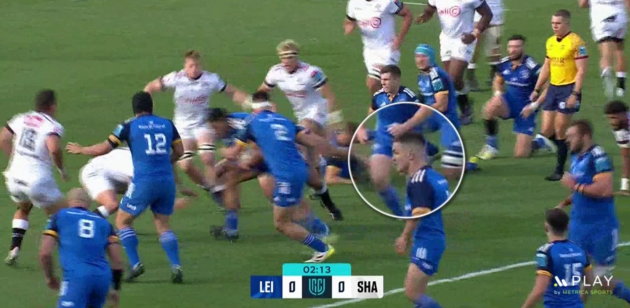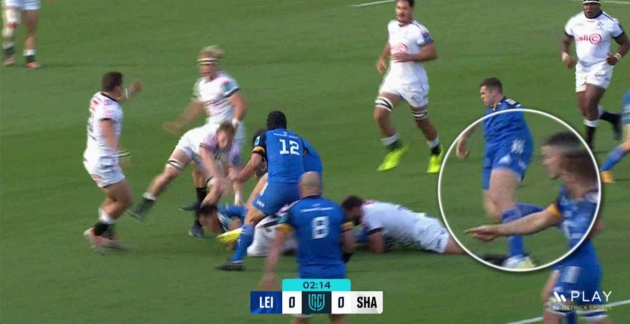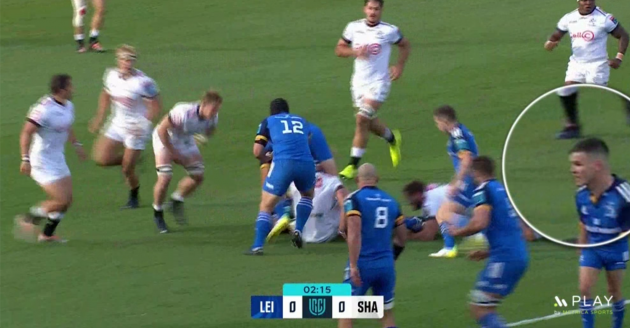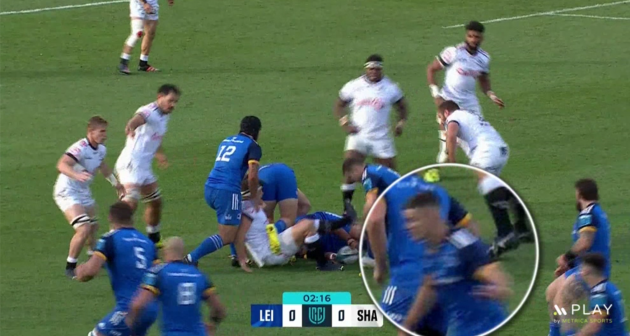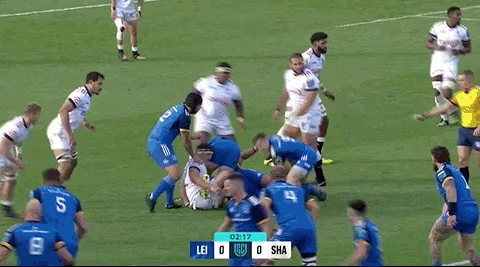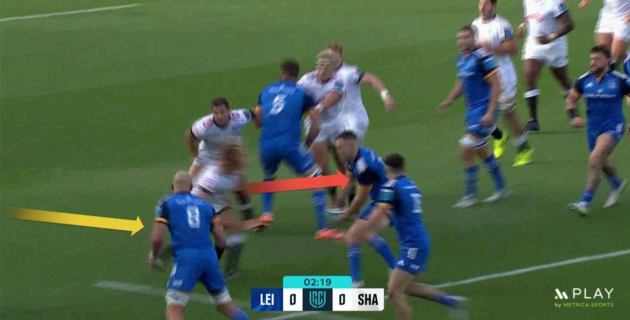LAST UPDATE | 13 Oct 2022
Read the full version of this exclusive analysis by becoming a member of The42 here or from the Membership tab in your iOS app.
IT’S THE LACK of cues Johnny Sexton gives that makes him so difficult to defend against but so enthralling to watch on the rugby pitch. His ability to scan and make decisions on the move mean defenders aren’t given early hints of what’s to come. And his organising of team-mates leaves him best positioned to pounce.
When Sexton is engaging with referees, his body language can be very clear indeed but when he’s playmaking in the heart of the action, there’s nothing obvious about Sexton’s actions. He’s 37 now, so opposition teams have had many years to analyse him but still they struggle to read what he’s going to do.
We got an enjoyable reminder of this last weekend as Sexton made his first start of the season, playing the full 80 minutes as Leinster overcame the Sharks.
Let’s jump straight into an example of what we’re talking about.
There’s lots going on in the five seconds we see above.
As Michael Ala’alatoa carries the ball, we can see Sexton scanning the defence, assessing where the opportunity might be…
Next, Sexton points for Jason Jenkins, Ross Molony, and Andrew Porter – who are working around the corner for Leinster – to set up a forward pod in front of him…
As Jenkins, Molony, and Porter move into position, we can see that Sexton is back scanning the Sharks defence and also assessing the other Leinster options around him…
The pod of forwards that Sexton has signalled for means he will have time on the ball on this next phase of the Leinster attack.
As he moves into position behind that forward pod, Sexton is still organising around him.
Below, we can see him signalling for Jimmy O’Brien to run out the back of Rhys Ruddock [number 8], giving Sexton two options when he is passing the ball.
With Ruddock also reacting to the situation well by shuffling wider and holding his depth, it means Leinster are now well set up to strike at the Sharks.
They really should score on this phase…
If O’Brien passes to Rob Russell, Leinster definitely cross the whitewash. Sexton’s role is crucial in creating the try-scoring chance.
Scrum-half Luke McGrath passes to Jenkins at the edge of Leinster’s 3-man pod of forwards, and the South African lock drops the ball off to Sexton.
Sexton’s actions on the ball are simple and clever. He just ever so slightly delays his pass in order to ensure Sharks wing Werner Kok is fully committed to tackling him [red below].
Sexton’s decision here is based on what the last defender, Sharks fullback Aphelele Fassi, is doing too.
Fassi can see O’Brien out the back but he has to worry about Sexton passing to Ruddock running through the front door. Sexton’s body language doesn’t give any cues. In the split second above, it really is unclear where Sexton is going to pass because he’s looking directly at Fassi.
In this instance, Fassi commits in on Ruddock [yellow above] as Sexton instead passes out the back to O’Brien, who really should send Russell over for a try.
All of this has happened in the space of roughly seven seconds and this underlines just how much scanning, computing, strategising, and decision-making Sexton does out on the pitch over the course of 80 minutes. He’s a nightmare for defences to deal with.
Don’t miss out on the rest of this exclusive analysis – The42 Members get this and all of our exclusive pieces delivered directly to their inbox. Join here or from the Membership tab in your iOS app.

